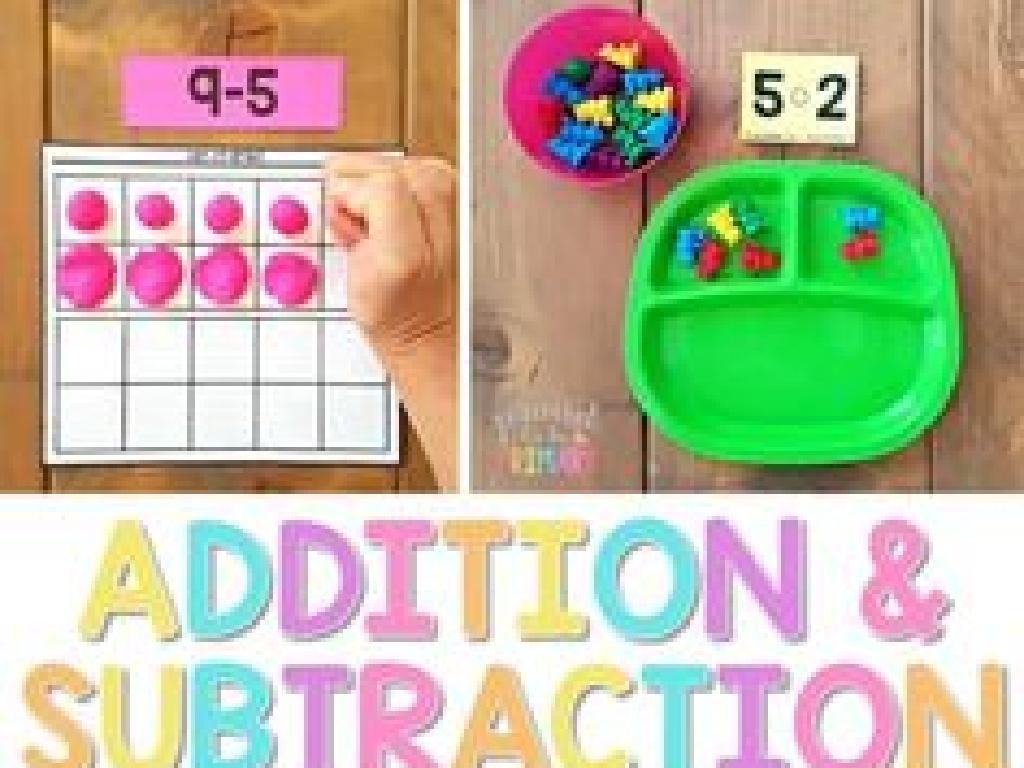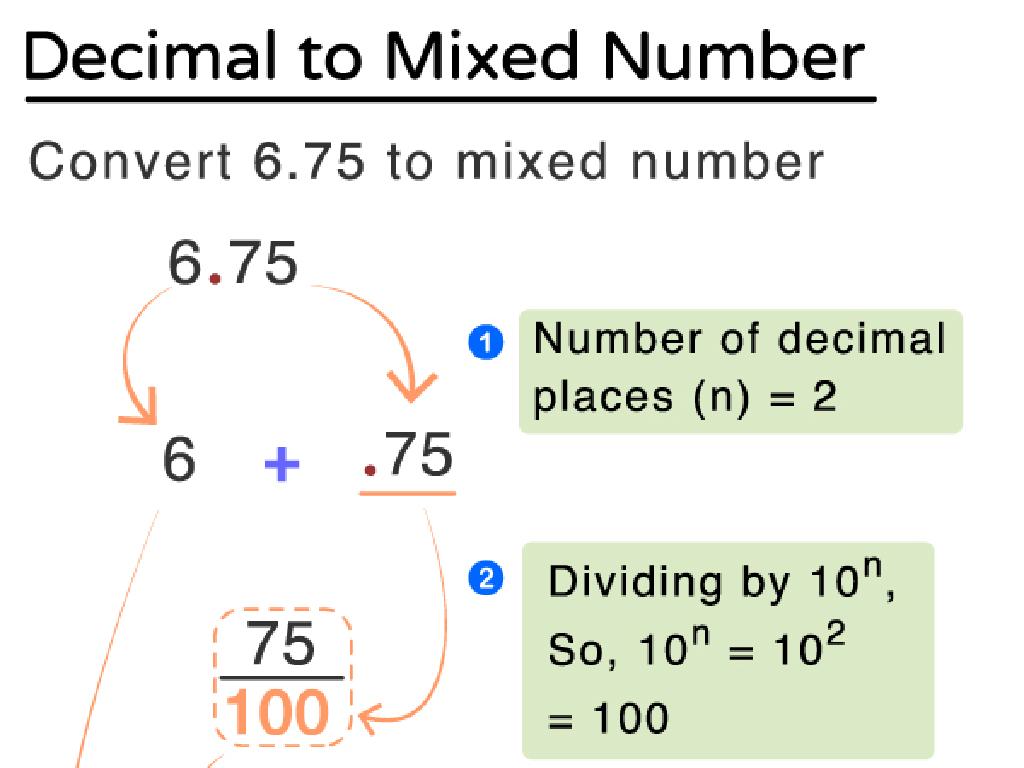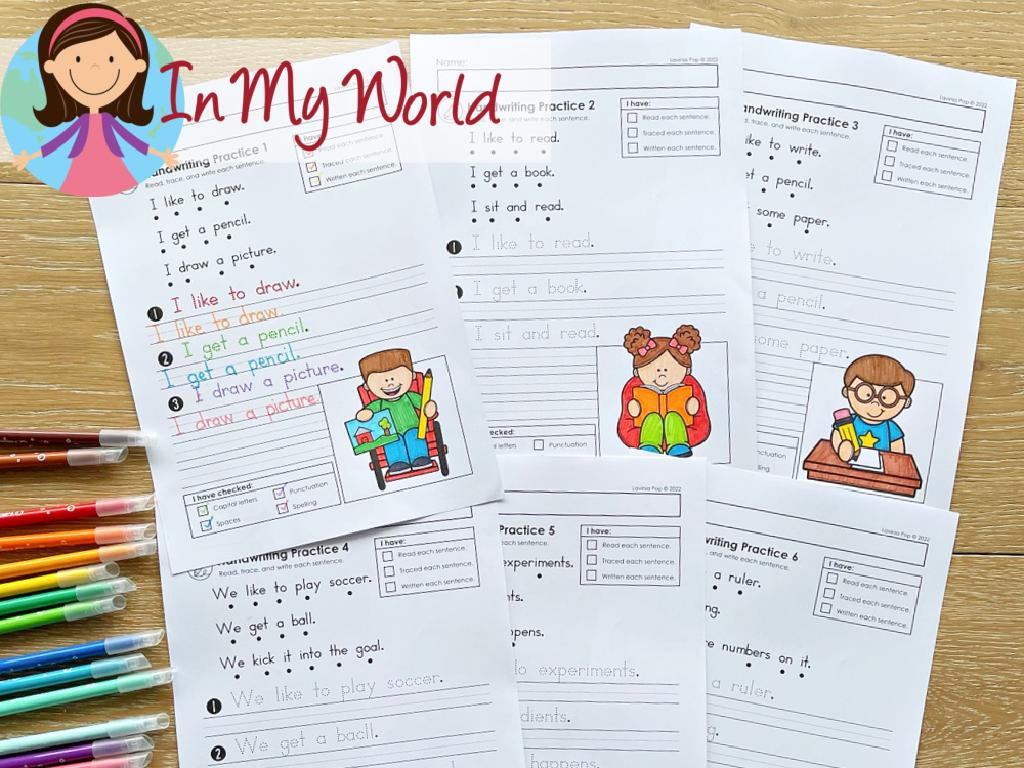Identify Comparative And Superlative Adjectives
Subject: Language arts
Grade: Third grade
Topic: Adjectives And Adverbs
Please LOG IN to download the presentation. Access is available to registered users only.
View More Content
Today’s Adventure: Comparative and Superlative Adjectives!
– Exploring comparative adjectives
– Words like ‘bigger’ or ‘faster’ compare two things
– Discovering superlative adjectives
– Words like ‘biggest’ or ‘fastest’ show the extreme among many
– Comparing things around us
– Look at objects in the classroom to practice comparing
– The role of adjectives in language
– Adjectives make our sentences colorful and informative
|
This slide introduces comparative and superlative adjectives to third graders, helping them understand how to compare objects and people around them. Comparative adjectives are used when speaking about two things, while superlative adjectives are used when discussing more than two things and wanting to express the extreme. Provide examples using familiar items, such as comparing the size of two books or finding the tallest student in the class. Emphasize the importance of adjectives in making our language more descriptive and engaging. Encourage students to think of their own examples and to be ready to use these adjectives in sentences during the next class.
Exploring Adjectives
– Adjectives describe nouns
– Words like ‘small’, ‘happy’, ‘blue’ give us more info about objects
– They tell us what kind, how many, or which one
– ‘Seven’ dogs, ‘few’ cookies, ‘first’ place show quantity or order
– Examples: ‘big’, ‘colorful’, ‘three’, ‘last’
– ‘Big’ elephant, ‘colorful’ flowers, ‘three’ bears, ‘last’ runner
|
This slide introduces the concept of adjectives to third-grade students. Adjectives are words that add description to nouns, giving more information about objects, people, places, and ideas. They can describe characteristics such as size, color, quantity, and order. Use everyday examples that the students can relate to, like describing their favorite toy or food. Encourage them to think of adjectives that they already know and use them in sentences. This will help them understand how adjectives enhance language and make their communication clearer and more interesting.
Comparative Adjectives
– Comparing two things
– Use when talking about 2 items, people, or places
– Often end with ‘-er’
– Words like ‘bigger’ or ‘faster’ show comparison
– Can use ‘more’ for comparison
– For longer words, say ‘more’ like ‘more careful’
– Examples: ‘taller’, ‘smarter’
– ‘John is taller than Mark’, ‘A bike is faster than a scooter’
|
This slide introduces comparative adjectives, which are used to compare two distinct objects, people, or places. Emphasize that when two things are being compared, one is usually ‘more’ or has ‘more of’ a certain quality than the other. For short adjectives, we typically add ‘-er’ to the end of the word. For adjectives that are longer, we use the word ‘more’ before the adjective. Provide examples and encourage students to think of their own comparisons. For instance, comparing the height of two students or the speed of different animals. This will help them understand how to use comparative adjectives in sentences.
Superlative Adjectives
– Comparing three or more items
– When we talk about a group and want to show the top one.
– Look for ‘-est’ or ‘most’
– Words ending in ‘-est’ or starting with ‘most’ are clues.
– Examples: ‘tallest’, ‘smartest’
– ‘The tallest tree’, ‘the smartest student’, ‘the most interesting book’.
– Use in sentences about groups
|
This slide introduces the concept of superlative adjectives, which are used to compare three or more things, highlighting the one that stands out the most. Teach the students to identify superlative adjectives by looking for the ‘-est’ suffix or the word ‘most’ before an adjective. Provide clear examples like ‘tallest’, ‘smartest’, and ‘most interesting’ to illustrate the concept. Encourage students to think of items they could compare in a group, such as their classmates, books in the library, or buildings in a city, and how they would use superlative adjectives to describe the one that is the most extreme in a particular quality. Have them practice by creating sentences that use superlative adjectives to describe something about a group.
Comparative & Superlative Adjectives
– Add ‘-er’ for one-syllable adjectives
– Example: ‘fast’ becomes ‘faster’
– Change ‘y’ to ‘i’ and add ‘-er’ or ‘-est’
– Example: ‘happy’ becomes ‘happier’ or ‘happiest’
– Two-syllable adjectives rules
– Use ‘-er/-est’ or ‘more/most’. Example: ‘clever’ becomes ‘cleverer’ or ‘more clever’
– Use ‘more/most’ for long adjectives
– Example: ‘beautiful’ becomes ‘more beautiful’
|
This slide provides the rules for forming comparative and superlative adjectives, which are used to compare objects or people. For one-syllable adjectives, simply add ‘-er’ for the comparative form and ‘-est’ for the superlative. If an adjective ends in ‘y’, change the ‘y’ to ‘i’ before adding the endings. Two-syllable adjectives can take ‘-er’/’-est’ or ‘more’/’most’ depending on which sounds better. Adjectives with three or more syllables always use ‘more’ for the comparative and ‘most’ for the superlative. Provide examples for each rule to help students understand. Encourage students to come up with their own examples and to use these adjectives in sentences to describe things around them or in stories.
Let’s Practice Comparative and Superlative Adjectives!
– Fill in the blanks with adjectives
– Use ‘faster’ for the first example
– ‘The blue car is faster than the red car.’
– Use ‘quietest’ for the second example
– ‘Out of all the students, Max is the quietest one.’
– Share your sentences with the class
|
This slide is an interactive class activity designed to help students practice using comparative and superlative adjectives. Start by explaining that comparative adjectives compare two things, while superlative adjectives are used to describe the extreme quality of one in a group. Provide the examples on the slide, then ask students to fill in the blanks with the correct form of the adjectives given in parentheses. After completing the examples, encourage students to create their own sentences using new adjectives and share them with the class. This activity will reinforce their understanding of the lesson and improve their ability to use adjectives in the correct form.
Class Activity: Comparative and Superlative Hunt
– Find objects to compare in class
– Describe objects using adjectives
– Use descriptive words like ‘big’, ‘small’, ‘heavy’, ‘light’
– Create comparative sentences
– Use ‘bigger’, ‘smaller’ to compare two things
– Form superlative sentences
– Use ‘biggest’, ‘smallest’ for comparing more than two
|
This activity is designed to help students understand and apply comparative and superlative adjectives in a fun and interactive way. Divide the class into small groups and have them look around the classroom to find objects they can compare. They should use adjectives to describe these objects and then create sentences using comparative adjectives (e.g., ‘The blue book is thicker than the red book.’) and superlative adjectives (e.g., ‘The green book is the thinnest of all.’). Encourage creativity and ensure each group has a chance to share their sentences with the class. Possible variations of the activity could include comparing students’ heights, lengths of pencils, or even amounts of liquid in different containers to cater to different learning styles and preferences.
Great Work on Adjectives!
– Review of comparative adjectives
– Review of superlative adjectives
– Homework: Write 10 sentences
– 5 with comparative, 5 with superlative
– Share your sentences next class
– Practice makes perfect, get creative!
|
This slide concludes our lesson on comparative and superlative adjectives. Reinforce the concept that comparative adjectives compare two things (e.g., taller, smaller) while superlative adjectives describe the extreme quality of one in a group (e.g., tallest, smallest). For homework, students should craft sentences that reflect their understanding of these concepts. Encourage creativity and the use of adjectives relevant to their daily lives. In the next class, create a supportive environment for students to share their work, which will help solidify their grasp of the material and build confidence in their language skills.






